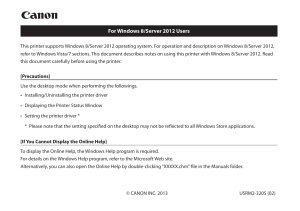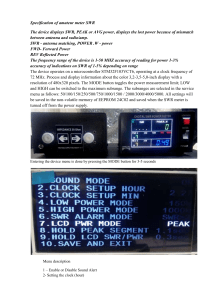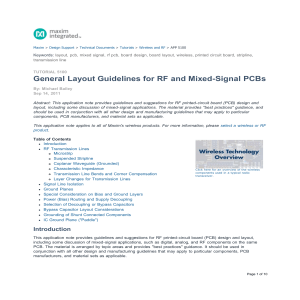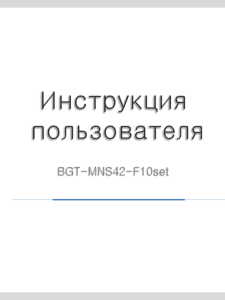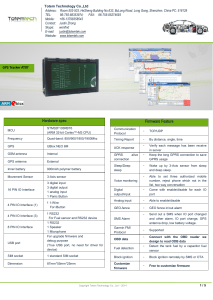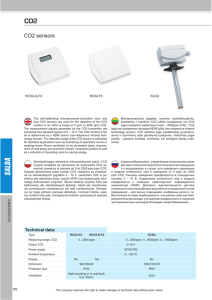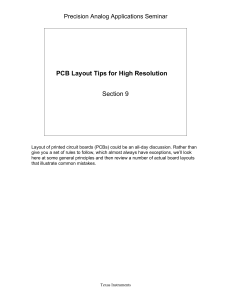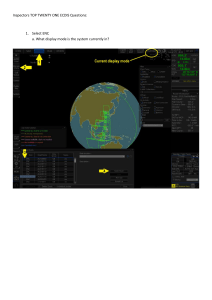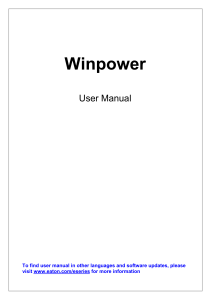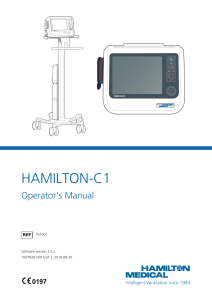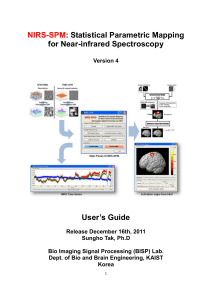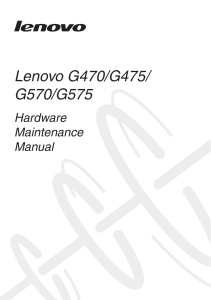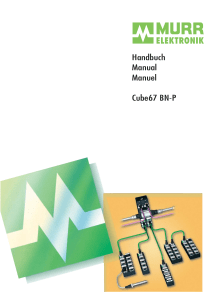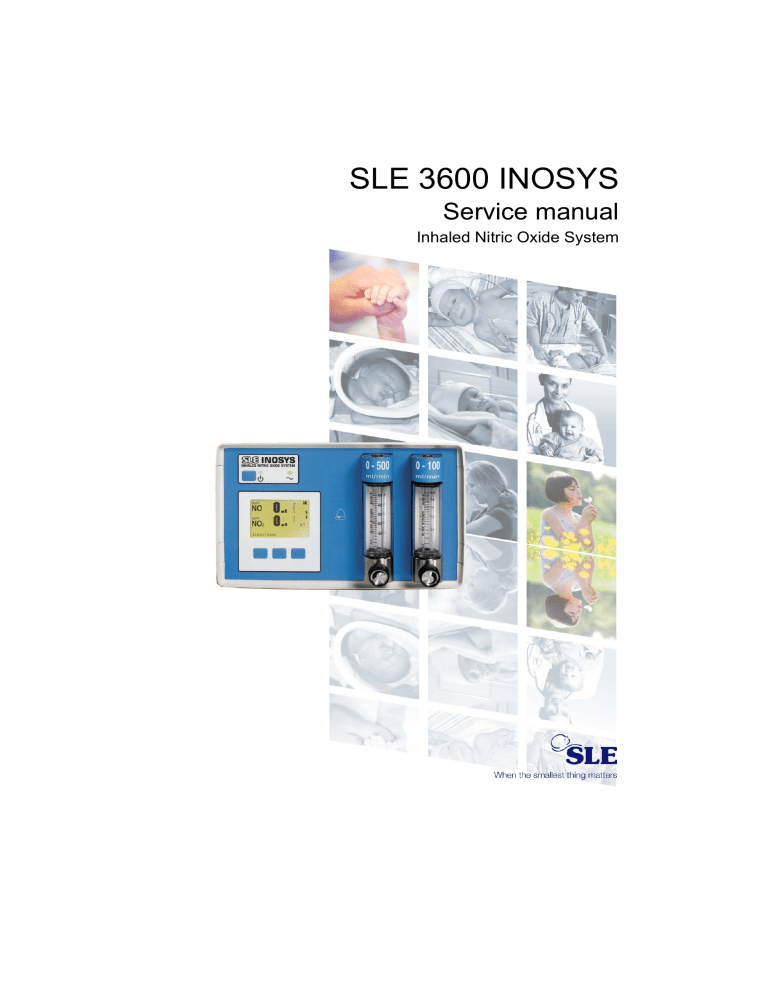
SLE 3600 INOSYS Service manual Inhaled Nitric Oxide System Contact Information: SLE Limited Twin Bridges Business Park 232 Selsdon Road South Croydon Surrey CR2 6PL Telephone: +44 (0)20 8681 1414 Fax: +44 (0)20 8649 8570 E-mail: admin@sle.co.uk Web site: www.sle.co.uk (E-mail’s should be addressed to the Service Manager) All rights reserved. No part of this publication may be reproduced, stored in any retrieval system, or transmitted in any form or by any means, electronic, mechanical, photocopy, recording or otherwise, without prior permission of SLE. © Copyright SLE 1/02/2010. Manual: SM0012 Issue 3 Page 2 (SLE3600) Contents 1. Introduction ............................................................................................................... 6 1.1. References and Related Documents.............................................................. 6 1.2. Terms and Abbreviations................................................................................ 6 2. Controls ..................................................................................................................... 8 2.1. Front Panel Description .................................................................................. 8 2.2. Rear Panel Description................................................................................... 9 3. Accessing the internal components of the INOSYS .................................................. 12 4. Calibration ................................................................................................................. 18 4.1. Flow Checking ................................................................................................ 19 4.2. Calibration procedure for SLE kit Nº: N4116 .................................................. 20 4.3. Calibration procedure for SLE kit Nº: N4123 .................................................. 26 5. Maintenance ............................................................................................................. 32 5.1. Electrical Interference..................................................................................... 32 5.2. Ventilator Alarm Checks ................................................................................. 32 5.3. Other Checks ................................................................................................. 32 5.4. Replacement of Fuses ................................................................................... 33 5.5. Cleaning ......................................................................................................... 33 5.6. Sensors .......................................................................................................... 33 5.7. Setting Time/date ........................................................................................... 34 5.8. Clock Dead ..................................................................................................... 35 5.9. Replacement of Sensor Cells ......................................................................... 37 5.10. Battery .......................................................................................................... 39 5.11. Replacement of battery ................................................................................ 39 5.12. Service ......................................................................................................... 39 6. INOSYS Trouble Shooting ........................................................................................ 42 7. Alarm Messages ....................................................................................................... 43 7.1. Alarm State Table........................................................................................... 44 8. Specification .............................................................................................................. 48 9. Hardware Overview .................................................................................................. 51 9.1. Functional Design Breakdown........................................................................ 51 9.2. External Interfaces ......................................................................................... 52 9.3. Internal Interfaces........................................................................................... 55 10. The Main Control PCB (S115395 issue 2) .............................................................. 56 10.1. Functional Circuit Blocks .............................................................................. 56 11. The Internal Printer PCB (S114641 issue 1) .......................................................... 60 12. The PSU PCB (S115398 issue 3) ........................................................................... 61 13. RS232 Interface ...................................................................................................... 62 (SLE3600) Page 3 14. Circuit Diagrams ......................................................................................................64 14.1. Main Control PCB circuit diagram. Sheet 1 of 2. ..........................................64 14.2. Main Control PCB circuit diagram. Sheet 2 of 2. .........................................65 14.3. INOSYS PSU PCB circuit diagram. ..............................................................66 14.4. INOSYS Wiring Schematic. ..........................................................................67 14.5. Printer Driver PCB circuit diagram. ...............................................................68 14.6. INOSYS Exploded view. ...............................................................................69 15. INOSYS Spares ......................................................................................................70 16. Service Information Letters and Technical Bulletin Index ........................................88 17. Issue Revision Record ............................................................................................89 Page 4 (SLE3600) Introduction (SLE3600) Page 5 1. Introduction 1.1 References and Related Documents Although this manual has been designed to include all information necessary to maintain optimum performance of INOSYS, it does not attempt to cover all of the operating procedures contained in the User Manual. A good working knowledge of the operation of the INOSYS is essential in attempting to carry out maintenance or repair work. In addition all warnings and cautions in the User Manual also apply for the service manual. The User Manual should therefore be considered a reference document for the Service Manual. 1.2 Terms and Abbreviations The following terms and abbreviations are used in this document: PSU LCD LED EPROM DPST ADC PWM NO NO2 Page 6 Power Supply Unit Liquid Crystal Display Light Emitting Diode Erasable/Programmable Read-Only Memory Dual Pole Single Throw Analogue to Digital Converter Pulse Width Modulated Nitric Oxide Nitrogen Dioxide (SLE3600) INOSYS control description (SLE3600) Page 7 2. Controls 2.1 Front Panel Description 1. Standby switch. 6. Right Control Key. 2. Standby LED. 7. LCD Display. 3. Power LED. 8. Alarm Light Bar. 4. Left Control Key. 9. Flow control, (coarse). 0 to 500ml/ min. 5. Centre Control Key. 10. Flow control, (fine). 0 to 100ml/min. Keys 4, 5 and 6 have multiple functions, the function of the key is displayed above the key on the LCD display. For the rest of this manual these keys will be referred to by their function and their position (LEFT, CENTRE and RIGHT). Page 8 (SLE3600) 2.2 Rear Panel Description 1. Exhaust. 6. Mains Connection. 2. Printer Port. 7. Analogue Output. 3. RS 232 Connector. 8. Power Switch. 4. NO Input 1bar. 9. Fuse Holder. 5. Ambient Air sampling port. 10. Alarm Control Signal from SLE Ventilator. • The Inosys should only be connected to equipment that complies with IEC 601-1 or IEC 950 configured to comply with IEC 601-1-1. (SLE3600) Page 9 This page is intentionally blank. Page 10 (SLE3600) Access to internal components (SLE3600) Page 11 3. Accessing the internal components of the INOSYS 2. Place the unit on a clean and level surface. 3. To remove the top cover a key has be inserted into slots to release the internal clips. 4. Insert the key into the indicated slots. View: Right hand side. 5. As the key is inserted apply gentle upward pressure on the case to separate the two halves. Page 12 Disconnect all gas and electrical supplies to the INOSYS. 1. (SLE3600) Insert the key into the indicated slots. View: Left hand side 7. If the unit is fitted with a printer disconnect the printer ribbon cable before the cover is removed. 8. To remove the sensor cells see section 5.9 on page 37 for details. 6. To remove the PCB first disconnect the inlet (1) and outlet (2) tubing to the sensor cells. 10. Disconnect the connectors mounted in the following locations A, B and C.) (SLE3600) B C 9. A 1 2 Page 13 4 3 2 5 1 11. Disconnect the connectors at J14 (1), J15 (2), J12 (3), J13 (4), J16 (5), J19 (6) See 14.4 INOSYS Wiring Schematic. on page 67 for further details. 6 View A 12. Disconnect the connectors at J10 (7), J9 (8). See 14.4 INOSYS Wiring Schematic. on page 67 for further details. 7 13. Remove the chassis earth strap (9) 8 9 View B 14 14. Disconnect the connectors at J25(10), J23 (11), J21 (12), J22 (13), J11 (14). See 14.4 INOSYS Wiring Schematic. on page 67 for further details. 10 11 12 13 15. The PCB can now be lifted away. Note The cables are attached to the rear of the PCB mounting plate and have to be released prior to complete removal of the PCB. View C Page 14 (SLE3600) 16. With the PCB removed you now have access to the following components. 20 19 18 21 Battery (15) Restrictor (16) Fan (17) Valve 1 (18) Valve 2 (19) Pump (20) Power supply (21) LCD Display (22) 16 (SLE3600) 15 22 Page 15 This page is intentionally blank. Page 16 (SLE3600) Calibration (SLE3600) Page 17 4. Calibration To calibrate the INOSYS the following equipment and gases are required. A supply of medical grade air, regulated to give a flow of 1.5 Lpm, plus: 1. 2. 3. 4. 5. 6. A gas cylinder with pressure regulator containing a certified NO/Nitrogen mixture of concentration between 20 and 30ppm (nominal 25ppm) in pure N2. A gas cylinder with pressure regulator containing a certified NO2/Air mixture of concentration between 5 and 15ppm (nominal 10ppm) in pure Air. Connection tubing. T-Piece for connection tubing. Plastic bodied flowmeter. Scavenger. These items are available in the form of SLE INOSYS calibration kit (part Nº: N4116). SLE also supply a disposable calibration kit (part Nº: N4123). The disposable calibration kit contains the following components. 1. 2. 3. A disposable gas cylinder with a fixed flow regulator containing a certified NO/ Nitrogen mixture of concentration between 20 and 30ppm in pure N2. A disposable gas cylinder with a fixed flow regulator containing a certified NO2/Air mixture of concentration between 5 and 15ppm in pure Air. Calibration connection tubing. When using the SLE INOSYS calibration kit, refer to the instructions with the kit. It is recommended that calibration should be carried out in a well ventilated room and that the exhaust gas is fed into a scavenging system If using a SLE calibration kit N4116 use the calibration procedure on page 20 If using a SLE calibration kit N4123 use the calibration procedure on page 26 Regardless of which kit is being used the INOSYS should have its flow through confirmed to be 300ml/minute. See “Flow Checking” on page 19. If you get ’lost’ at any time during calibration, switch the unit off and start again. Page 18 (SLE3600) 4.1 Flow Checking Before calibration the flow through the Inosys should be checked to be 300ml/minute. Note: Either disconnect the delivery regulator or open the regulator fully to allow flow before attempting the 300ml/minute check. • Connect the NO OUTPUT to the PATIENT INPUT with the supplied tube. SIDE VIEW Patient input NO Output Flow Checking tube in Calibration kit • Fully close the fine flow control on the front of the unit (Clockwise). • Fully open the coarse flow control on the front of the unit (Anticlockwise) • Switch on the Inosys and observe the flow rate on the coarse flow gauge. It will be necessary to reset the low alarm value of the NO to zero. • The flow gauge should read approximately 300ml. If the flow gauge reads below 280ml or above 330ml adjust the internal flow valve, located on the battery housing beneath the PCB. See “Accessing the internal components of the INOSYS” on page 12. 500 400 300 300ml 200 100 (SLE3600) Page 19 4.2 Calibration procedure for SLE kit Nº: N4116 4.2.1 Zero Calibration • With the unit switched off connect the medical grade air supply to the Patient Input via the flowmeter and the tee-piece. Flow Meter Scavenger Tee Piece Medical Air Supply Patient Input Top View of Inosys • Turn on the medical air supply and adjust the wall pressure regulator until the flow is 1.5LPM as read on the flowmeter. • Connect the INOSYS to a suitably grounded power source. • Switch on the unit at the rear and then press the standby switch on the front (See “Front Panel Description” on page 8.). • After 30 seconds the Connect Ventilator Alarm alarm will sound, when it does, press Continue (left) and then Yes (centre). The NO Low Alarm will then sound, press Reset (left) Press the Setup button (centre). Mode Setup Print Press the More button (right). Alarm PRN More Press and hold the unmarked (centre) button for 5 seconds. LCD Page 20 Exit (SLE3600) Press the Zero button (left) The unit will display ’Purge System’ Flush with air for 3 minutes. Press the Start button (left) The unit will display ’Zeroing’. Zero Span Start Exit Abort • It is possible to abort by pressing abort before the unit displays ’Zeroing Done’. Press the Continue button (left). The unit will ask if the user wishes to save the settings or not. Press the Yes button (left). The unit will then ask if the user wishes to restore the Low NO Alarm limit as this may be adjusted to avoid sounding alarms. ’Restore NO Lim’ Choose Yes button (left) or No button (centre). ’Yes’ is recommended. Continue Yes Yes No No • Close the air supply. • Once the tubing has de-pressurised, fully close the pressure regulator and disconnect supply. Zero Calibration is now complete. (SLE3600) Page 21 4.2.2 Nitric Oxide Calibration • Use a certified NO/Nitrogen mixture of concentration between 20 and 30ppm NO in pure N2 • Agitate or roll the cylinder for at least 5 minutes before use, to ensure that the gas is well mixed. • Connect NO/Nitrogen mixture, turn on the gas cylinder and adjust the flow rate to 1.5LPM read on the plastic flow meter. • Wait 1 minute for the instrument NO reading to stabilise. Note: During NO calibration the NO2 reading will fluctuate. Ignore this. Press the Span button (centre). Zero Press the NO button (left). NO Use the Up (left) and Down (centre) buttons to enter the concentration of the calibration gas. Press the Exit button (right). Press the Start button (left) The unit will display ’Calibrating NO’ and then ’NO Span Done’. Or if incorrect gas is used the unit will display ’Cal out of range’. Page 22 Up Up Start Span Exit NO2 Exit Down Exit Down Exit Abort (SLE3600) Press the Continue button (left) The unit will ask if the user wishes to save the settings or not. Press the Yes button (left).The unit will then ask if the user wishes to restore the High NO Alarm limit as this may be adjusted to avoid sounding alarms. ’Restore NO Lim’ Choose Yes button (left) or No button (centre). ’Yes’ is recommended. Continue Yes Yes No No • Close the NO supply on the bottle. • Once the tubing has de-pressurised, fully close the pressure regulator and disconnect the NO bottle. The Nitric Oxide is now calibrated. (SLE3600) Page 23 4.2.3 Nitrogen Dioxide Calibration • Flush the unit with air. (See “Zero Calibration” on page 20.) • Use a certified NO2/Air mixture of concentration between 5 and 15ppm NO in Air. • Agitate or roll the cylinder for at least 5 minutes before use, to ensure that the gas is well mixed. • Connect NO2/Air mixture and adjust the flow with the pressure regulator to 1.5LPM read on the plastic flow meter. • Because of the absorption characteristics of NO2 , wait 3 minutes for the instrument reading to stabilise. Note: During NO2 calibration the NO readings will fluctuate. Ignore this . Press the Span button (centre). Zero Press the NO2 button (centre). NO Use the Up (left) and Down (centre) buttons to enter the concentration of the calibration gas. Press the Exit button (right). Page 24 Up Up Span Exit NO2 Exit Down Exit Down Exit (SLE3600) Press the Start button (left) The unit will display ’Calibrating NO2’ and then ’NO2 Span Done’.Or if incorrect gas is used the unit will display ’Cal out of range’. Press the Continue button (left) The unit will ask if the user wishes to save the settings or not. Press the Yes button (left). The unit will then ask if the user wishes to restore the NO2 Alarm limit as this may be adjusted to avoid sounding alarms. ’Restore NO2 Lim?’ Choose Yes button (left) or No button (centre) .’Yes’ is recommended. Press the Exit button (right). Start Abort Continue Yes No Yes No Zero Span Exit Note: If a printer is attached the calibration information will be printed after completion of each calibration. Close the NO2 supply on the bottle. Once the tubing has de-pressurised, fully close the pressure regulator and disconnect the NO2 bottle. The Nitrogen Dioxide is now calibrated. Connect the supply of medical grade air, regulated to give a flow of 1.5LPM to the patient input and flush the unit with air. Disconnect air supply. The unit is now ready for use. (SLE3600) Page 25 4.3 Calibration procedure for SLE kit Nº: N4123 4.3.1 Zero Calibration • With the unit switched off connect the medical air supply to the patient input via the flow checking tube. Medical Air Supply Patient Input Flow Checking Tube Top View of Inosys • Open the supply of medical grade air regulated to give a flow of 1.5 LPM to the patient input. • Connect the INOSYS to a suitably grounded power source. • Switch on the unit at the rear and then press the standby switch on the front. (See “Front Panel Description” on page 8.). • After 30 seconds the Connect Ventilator Alarm alarm will sound, when it does, press Continue (left) and then Yes (centre). The NO Low Alarm will then sound, press Reset (left) Press the Setup button (centre). Mode Setup Print Press the More button (right). Alarm PRN More Press and hold the unmarked (centre) button for 5 seconds. LCD Page 26 Exit (SLE3600) Press the Zero button (left) The unit will display ’Purge System’ Flush with air for 3 minutes. Press the Start button (left) The unit will display ’Zeroing’. Zero Span Start Exit Abort • It is possible to abort by pressing abort before the unit displays ’Zeroing Done’. Press the Continue button (left) The unit will ask if the user wishes to save the settings or not. Press the Yes button (left). The unit will then ask if the user wishes to restore the Low NO Alarm limit as this may be adjusted to avoid sounding alarms. ’Restore NO Lim’ Choose No button (centre) if calibration procedure is to continue. Choose Yes button (left) if calibration procedure is complete. Continue Yes Yes No No • Turn off and disconnect the supply of medical grade air. Zero Calibration is now complete. (SLE3600) Page 27 4.3.2 Nitric Oxide Calibration • Use a certified NO/Nitrogen mixture of concentration between 20 and 30ppm NO in pure N2 • Agitate or roll the cylinder for at least 5 minutes before use, to ensure that the gas is well mixed. • Connect NO/Nitrogen mixture, turn on the gas cylinder and adjust the flow rate to 1.5LPM read on the plastic flow meter. • Wait 1 minute for the instrument NO reading to stabilise. Note: During NO calibration the NO2 reading will fluctuate. Ignore this. NO Gas Supply Patient Input Flow Checking Tube Top View of Inosys Press the Span button (centre). Zero Press the NO button (left). NO Use the Up (left) and Down (centre) buttons to enter the concentration of the calibration gas. (Concentration of gas indicated on gas cylinder). Press the Exit button (right). Up Up Span Exit NO2 Exit Down Exit Down Exit Turn on the gas cylinder using the fixed flow regulator preset at 1.5 LPM. Wait 1 minute for the instrument NO reading to stabilise. Press the Start button (left) The unit will display ’Calibrating NO’ and then ’NO Span Done’. Or if incorrect gas is used the unit will display ’Cal out of range’. Page 28 Start Abort (SLE3600) Press the Continue button (left) The unit will ask if the user wishes to save the settings or not. Press the Yes button (left).The unit will then ask if the user wishes to restore the High NO Alarm limit as this may be adjusted to avoid sounding alarms. ’Restore NO Lim’ Choose No button (centre) if calibration procedure is to continue. Choose Yes button (left) if calibration procedure is complete. Continue Yes Yes No No • Close the NO supply on the bottle. The Nitric Oxide is now calibrated. 4.3.3 Nitrogen Dioxide Calibration • Flush the unit with air. Connect the supply of medical grade air, regulated to give a flow of 1.5LPM to the patient input. (See “Zero Calibration” on page 26.) • Use a certified NO2/Air mixture of concentration between 5 and 15ppm NO in Air. • Agitate or roll the cylinder for at least 5 minutes before use, to ensure that the gas is well mixed. • Connect NO2/Air mixture and adjust the flow with the pressure regulator to 1.5LPM read on the plastic flow meter. • Because of the absorption characteristics of NO2, wait 3 minutes for the instrument reading to stabilise. Note: During NO2 calibration the NO readings will fluctuate. Ignore this. NO2 Gas Supply Patient Input Flow Checking Tube Top View of Inosys (SLE3600) Page 29 Press the Span button (centre). Zero Press the NO2 button (centre). NO Use the Up (left) and Down (centre) buttons to enter the concentration of the calibration gas. Press the Exit button (right). Press the Start button (left) The unit will display ’Calibrating NO2’ and then ’NO2 Span Done’.Or if incorrect gas is used the unit will display ’Cal out of range’. Press the Continue button (left) The unit will ask if the user wishes to save the settings or not. Press the Yes button (left). The unit will then ask if the user wishes to restore the NO2 Alarm limit as this may be adjusted to avoid sounding alarms. ’Restore NO2 Lim’ Choose No button (centre) if calibration procedure is to continue. Choose Yes button (left) if calibration procedure is complete. Press the Exit button (right). Up Up Span Exit NO2 Exit Down Exit Down Exit Start Abort Continue Yes No Yes No Zero Span Exit Note: If a printer is attached the calibration information will be printed after completion of each calibration. Close the NO2 supply on the bottle. Once the tubing has de-pressurised, fully close the pressure regulator and disconnect the NO2 bottle. The Nitrogen Dioxide is now calibrated. Connect the supply of medical grade air, regulated to give a flow of 1.5LPM to the patient input and flush the unit with air. Disconnect air supply. The unit is now ready for use. Page 30 (SLE3600) Maintenance (SLE3600) Page 31 5. Maintenance 5.1 Electrical Interference Note: All these tests should be carried out by a qualified engineer. If the INOSYS is adversely affected by equipment emitting electromagnetic interference then that equipment should be switched off or removed from the vicinity of the INOSYS. Conversely, if the INOSYS is the source of the interference to other neighbouring equipment it should be turned off or taken to another location. Use of mobile phones or other high frequency sources in the vicinity of the INOSYS is not recommended. Care should be taken to ensure that cables leading to the INOSYS are not mixed with other equipment cabling. 5.2 Ventilator Alarm Checks Please refer to the service manual for your ventilator. 5.3 Other Checks All cables, tubes and fittings should be checked periodically. If they appear damaged or faulty they should be replaced. The hydrophobic filter should be checked periodically and changed or emptied if required. When the warning “Calibration Overdue” is displayed, the sensor(s) must be re-calibrated. See Calibration procedure on page 18. When the warning “Replace Sensor” is displayed, the sensor(s) must be replaced. Note: That this warning will be displayed at 12 monthly intervals and must be adhered to. In the event of a low NO alarm, the cause (e.g. water in patient sampling tube, stuck patient/ ambient valve, blocked or kinked patient input tube), should be investigated prior to increasing the NO flowmeters to ensure that the concentrations of NO delivered to the patient is no higher than thought administered. The flow meters on the front panel of the INOSYS can be inaccurate if they are not vertical or subject to acceleration. Page 32 (SLE3600) 5.4 Replacement of Fuses Switch of the unit and remove the power cord. Insert a suitable screw driver in the slot provided and gently ease the fuse holder out. Replace the fuse with those of the same type and rating. Push the fuse holder back in position ensuring it is orientated for the correct voltage setting, 230V ac or 115V ac. 5.5 Cleaning Before cleaning the exterior of the unit, the power cord should be disconnected from the mains supply. Also, disconnect the NO supply and any attached ventilator. DO NOT use any strong solvent cleaners. CUATION: Do not allow moisture to enter the inside of the unit. Electronic malfunction may result. DO NOT wash or immerse in water, or other liquids. 5.6 Sensors SLE recommend that the sensors are calibrated prior to each use or every 28 days, the unit will advise the user when this is necessary on the LCD start-up screen. See Calibration Procedure for details on page 18 for details. The NO and NO2 sensor cells must be replaced once a year. The unit will advise the user when this is necessary. (SLE3600) Page 33 5.7 Setting Time/date This feature allows for the setting of the battery backed up real time clock. This clock is necessary for the unit to trace time since the last calibration and sensor change. To access the "Time /Date" menu Follow the following sequence: From the main menu press the Print button (right) Press and hold the unmarked (right) button for 5 seconds Press the Setup (left) button Press the Time button. The menu displays the current time and date in the format "hh:mm dd/mmm/yy" hh = hour between 0 and 23 mm = minute between 0 and 59 dd = day between 1 and 31 mmm = month between "Jan" and "Dec" yy = year between 97 and 50. Values between 0 and 50 indicate 2000 to 2050 Press the Next (left) button to step through the time and date The element selected for change flashes. Use the UP button to increase the selected value. When the desired value is reached use the "Next" button to select the next element to change. When the desired values are set press the Exit button to leave the "Time menu. If an invalid time or date has been entered the "Invalid Time Date" menu will be displayed. Press "continue" to re-enter the time and date. The "Confirm Time" menu will now be displayed. Pressing the Reject will return you to the "Time" menu where any further changes can be made. Pressing the Accept button will program the clock with the new time and date settings. Press the Exit (right) button Page 34 (SLE3600) 5.8 Clock Dead If the internal battery has been allowed to become flat, when the unit is turned on a alarm message "Clock Dead" will appear. This means the unit has no record of the current time or date. This also affects the calibration cycle of the unit and will cause the unit to prompt recalibration of the sensors. To clear the clock dead alarm use the following procedure. Step 1. Connect the unit to a suitably grounded power supply and leave the unit in stand-by mode for 5 hours to recharge the battery. Step 2. Turn on the unit and disable the VN alarm so you reach the main menu. Step 3. Carry out the Time/Date setting procedure already described in section 5.7 on page 34. Step 4. The unit will now display calibrate NO and NO2 sensors as it no longer carries the last calibration date for the sensors. To restart the cycle the unit has to be told that the sensors have been replaced. To do this use the following procedure. From the main menu press the Print button (right) Press and hold the unmarked (right) button for 5 seconds Press the Setup (left) button Press the Sensor (left) button Press the NO (left) or NO2 (centre) buttons to select the required sensor cell Press the Replaced (left) to indicate a new sensor cell has been fitted Press Yes (left) to confirm NO (centre) abort setting Press Exit (right) to return to the main menu (SLE3600) Page 35 Step 5. The unit now has to be left in stand-by mode for 4 days after sensor replacement to allow the sensors to stabilize. Step 6. The sensor cells must then be re-calibrated. See Calibration Procedure on page 18 for details. Page 36 (SLE3600) 5.9 Replacement of Sensor Cells Step 1. Remove the top cover (Refer to “Accessing the internal components of the INOSYS” on page 12). The NO and NO2 sensor cells are located on the left of the PCB and are clearly labelled. Disconnect the silicone tubing from each sensor. Undo the two outer screws (A) holding the polarising plate. The cells can be lifted clear. . A: The fixing screws for the NO and NO2 sensor cells. Step 2. Turn the sensor cells over and remove the three screws (B) that secures the cells to the manifold. B B B B B B Step 3. Discard the sensor and refit the new sensor cell to the manifold. Note: new sensors may have a link spring fitted between two of the electrical contacts. This link has to be removed as it will damage the sensor if it remains in place and the unit is powered up. Step 4. Reconnect the silicone tubing to the sensors cells. Refit the cells to the PCB and reconnect the outlet and inlet connections. Replace the top cover. (SLE3600) Page 37 Step 5. The INOSYS unit now has to be told that new sensor cells have been fitted. To do this use the following procedure. From the main menu press the Print button (right) Press and hold the unmarked (right) button for 5 seconds Press the Setup (left) button Press the Sensor (left) button Press the NO (left) or NO2 (centre) buttons to select the required sensor cell Press the Replaced (left) to indicate a new sensor cell has been fitted Press Yes (left) to confirm NO (right) abort setting Press Exit (right) to return to the main menu Step 6. Do not use the unit for 4 days after sensor replacement to allow the sensors to stabilize. During this period the unit must be connected to the mains supply and left in stand-by mode. The unit must then be re-calibrated. See Calibration Procedure on page 18 for details. Page 38 (SLE3600) 5.10 Battery 5.10.1 Charging The unit should be connected to a suitable earthed hospital grade mains power supply and switched on at the rear for at least 5 hours every 2-3 months. However, SLE strongly recommend that the unit is left in stand-by mode and connected to the mains supply when in use and when stored. If the battery is not charged on a regular basis, SLE recommend the battery be changed once a year. 5.11 Replacement of battery Remove the top cover using the special key provided. Remove the exhaust tubing and the dual barb connector. Remove the tubing to the C sensor. Unclip the PCB assembly and lift it away. Undo the 4 screws holding the bracket marked BAT1 and remove the bracket. Disconnect the battery and install the replacement. Connect the battery and restore bracket marked BAT1. Re-seat PCB assembly ensuring it is held in place. Connect NO2 tubing. Fit the dual bard connector and connect the exhaust tubing. Note: After battery replacement or if the battery is allowed to become discharged the unit must be left in stand-by mode and connected to the mains supply for 4 days to allow the sensors to stabilize. Before use the unit must be re-calibrated. See Calibration Procedure for details on page 18 for details. 5.12 Service It is recommended that the following checks are carried out once a year in accordance with BS EN 601-1:1990: Insulation Resistance, protective Earth continuity, Earth leakage current, Enclosure leakage current. 5.12.1 Regulator Test Procedure Step 1. Ensuring that the regulator is fully off, (turned fully anti-clockwise), and the gas cylinder is NO gas with a pressure of 100 - 200 bar, nominal concentration 1000ppm NO. Connect regulator to gas cylinder, (hand tighten and then apply a quarter turn more with a spanner to ensure a good seal). Step 2. Connect to INOSYS and switch the unit on. SET low NO alarm to zero, (see User Manual), and connect Patient Input to NO output with calibration kit tube. Step 3. Vent the exhaust out of a window. (SLE3600) Page 39 Step 4. Open the gas cylinder tap. If there is a leak, close the tap. Ensure the white seal is fitted, tighten the connection and open the tap again. Increase the output pressure to 14 psi maintaining a flow of 300 ml with the coarse flow regulator on the front of the INOSYS. Step 5. Increase the output pressure and record the maximum. This should be no more than 3 bar. (if the regulator fails then replace) Step 6. Close the gas cylinder tap. Once the tubing has de-pressurised, fully close the pressure regulator and disconnect from the INOSYS. Remove calibration kit tube. Step 7. Block the end of the hose, that would normally connect the back of the INOSYS with the blocking cap. Step 8. Open gas cylinder tap. If there is a leak, close tap, tighten connection and open the tap again. Step 9. Set output pressure of regulator to 1 bar. Step 10. Use the INOSYS as a “Sniffer” by applying the sniffer tube to the patient input and “Sniff” every joint on the regulator for at least 10 seconds. Any reading of NO concentration above ambient level indicates a leak that must be investigated and rectified. Step 11. Close cylinder tap. Step 12. Put the blocked end of the hose out of a window and remove the blocking cap. Once the gas has escaped remove the regulator from the cylinder. Step 13. Close the regulator. Turn off the INOSYS and remove the sniffer tube. Page 40 (SLE3600) Troubleshooting chart (SLE3600) Page 41 6. INOSYS Trouble Shooting Symptom Possible cause Action INOSYS does not switch Power cable not plugged Plug cable into power inlet at on in rear of unit Rear panel power switch Switch to “ON” position. not on. Stand-by LED not flashing LCD screen blank Front panel stand-by switch not on Press stand-by switch. Battery flat. Replace or recharge battery. Power supply module faulty. Battery flat. Replace power supply module. Internal power cable not connected Check power cable and rectify. Replace or recharge battery. Check data cable and rectify. Internal data cable not connected. Replace main control PCB. No response to keypad commands. Faulty main control PCB. Internal cable not Check cable and rectify. connected. Internal printer not responding. Faulty main control PCB. Replace main control PCB. Internal cable not Check cable and rectify. connected Fan not operating. Clock Dead Page 42 Paper not loaded Load paper. Faulty printer unit. Internal cable not connected Replace printer unit. Check cable and rectify. Faulty fan. Battery flat Replace fan. See section 5.8 on page 35 (SLE3600) 7. Alarm Messages Alarms are warning signals displayed to the operator to indicate either that the NO or NO2 levels have crossed programmable limits or that there is a problem with the unit. The audible alarm may be temporarily silenced with the alarm mute button, however visual alarms may not. If the NO or NO2 high alarm is activated then the NO supply solenoid will cut-off the NO supply to the circuit, once the gas concentration has been returned to within the chosen parameters the user must press the alarm reset button to return to normal operation. The software will prevent the user from setting illogical alarm threshold values. On powering up from Stand-by, limits will be reset to their defaults. In addition to an audio/visual indication of an alarm being triggered, the limit for the actual alarm triggered will flash on the LCD. Fixed alarms Fault condition Warning Action Low battery. :LCD and Audio Charge Unit System malfunction. :Flashing Light Bar Consult SLE or Distributor Corruption of data held in non-volatile memory. : LCD ’Checksum failed’ The User can choose to enter new values or use defaults Calibration overdue (after a warning). This will not prevent instrument operation. :LCD on startup ’Calib Due’ Calibrate sensors See “Calibration” on page 18. Sensor replacement overdue (after a warning). This will not prevent instrument operation. :LCD on startup ’Replace Sen’ Replace sensor Qualified, suitably trained personnel only If an internal printer is present and selected, alarm events will be printed and date and time stamped. (SLE3600) Page 43 7.1 Alarm State Table Alarm Current Condition: Shut off valve Message Displayed Audible Warning Limit Flash Error Printout Warning Bar NO goes above limit. No user intervention. OFF after set delay. NO High ON YES YES YES NO above limit. Mute key pressed. OFF after set delay. NO High OFF after delay YES NO YES NO above limit. Reset key pressed. OFF after set delay. None OFF YES NO YES NO falls back below high limit. Already reset. ON None OFF NO NO NO NO falls back below high limit. NOT reset. OFF after set delay. NO High OFF YES NO YES NO Below low limit. No user intervention. ON NO High YES YES YES YES NO Below low limit. Reset key pressed. ON None NO YES NO NO NO returns above low limit. Already reset. ON None NO NO NO NO NO returns above low limit. NOT reset. ON NO High NO YES NO YES NO2 goes above limit. No user intervention. OFF after set delay. NO2 High ON YES YES YES NO2 above limit. Mute key pressed. OFF after set delay. NO2 High OFF after delay YES NO YES NO2 above limit. Reset key pressed. OFF after set delay. None OFF YES NO YES NO2 falls back below high limit. Already reset. ON None OFF NO NO NO NO2 falls back below high limit. NOT reset. OFF after set delay. NO2 High OFF YES NO YES NO returns above low limit. NOT reset. ON NO High NO YES NO YES NO Already above high limit, then NO2 goes above limit. No user intervention. OFF after set delay. NO2 High Message overrides YES YES YES YES NO Already above high limit, then NO2 goes above limit. Reset key pressed. OFF after set delay. NO High Message YES YES YES YES NO and NO2 both above high limit, NO2 already reset. Reset key pressed. OFF after set delay. None NO YES NO YES Ventilator Low Flow Alarm Display error until key pressed Shut Off On Error VENTILATOR ALARM YES NO YES YES Page 44 (SLE3600) Alarm Current Condition: Shut off valve Message Displayed Audible Warning Limit Flash Error Printout Warning Bar NO Sensor calibration due. Display error until key pressed. Unaffected NO Calib Due NO NO YES NO NO2 Sensor calibration due. Display error until key pressed. Unaffected NO2 Calib Due NO NO YES NO NO Sensor Replacement due. Display error until key pressed. Unaffected Replace NO SEN NO NO YES NO NO2 Sensor Replacement due. Display error until key pressed. Unaffected Replace NO2 Sen NO NO YES NO Non-volatile memory corrupt. Display error until key pressed. Unaffected Checksum Failed NO NO YES NO Battery Volts below “Battery Low” threshold. Display error until key pressed. Unaffected Battery Low YES NO NO YES Battery Volts below “Battery Dead” threshold. Display error until key pressed or, after 30 seconds unit goes to standby. Unaffected Charge Batt NOW NO NO NO NO Internal Printer fault ( i.e. paper jam ). Display error until key pressed. Unaffected Int Prn Fault NO NO NO NO External Printer fault. Display error until key pressed. Unaffected Ext Prn Fault NO NO NO NO ADC Failed Display error until key pressed. Unaffected ADC Failed NO NO YES NO Clock stopped or dead Display error until key pressed. Unaffected Clock Dead NO NO YES NO Time fields outside range Display error until key pressed Unaffected Time Date Corrupt NO NO YES NO Shutoff valve failed Display error until key pressed Unaffected Stop Valve Fault NO NO YES NO PRN No Mains Display error until key pressed Unaffected PRN mains needed NO NO YES NO Ambient Valve Failed Display error until key pressed Unaffected Amb Valve Fault NO NO YES NO Pump Dead Display error until key pressed Unaffected Pump Failure NO NO YES NO Calibration outside limits Display error until key pressed Unaffected Cal out of range NO NO YES NO External printer out of paper Display error until key pressed Unaffected Ext PRN No Paper NO NO YES NO (SLE3600) Page 45 This page is intentionally blank. Page 46 (SLE3600) Technical specification (SLE3600) Page 47 8. Specification Accuracy ±4% of the reading or ±1ppm whichever is greater. To this must be added: -1% per fortnight for sensor drift, correctable via calibration. <25% cross sensitivity of NO to NO2 E.g. +0.25 ppm for an NO2 level of 1ppm. Precision 2% CV or 0.5ppm SD whichever is greater NO Sensor Range 0-200ppm Resolution@ 0.1 ppm for NO < 100ppm @1 ppm for NO > 100ppm NO2 Sensor Range 0-50ppm Resolution 0.1ppm Input Voltage Range(s) 230V(AC) and 110V(AC) Power 38VA Internal Battery(5hrs battery use on a full charge for a fully operational battery) Bat 1 YUASA Type NP4-12 12V 4Ah Sealed Lead Acid Input Frequency Range 47- 63Hz IEC Safety Category Class l Fuses 110/230V Live & Neutral Fusing Type 315mA (T)250V Protection against electric shock Class 1 Degree of protection against electric shock Type B Degree of protection against ingress of fluids IPX0 Degree of protection against flammable anaesthetic mixtures with air, O2 or NO Not protected Mode of operation Continuous Mains Interface IEC 320 Style connector PC connection RS232 connection. The RS232 9600 baud, 8 data bits, 1 stop bit, no parity. Internal Printer (Optional) MTI Series Thermal printer Page 48 (SLE3600) External Printer use Hewlett Packard Deskjet or compatible printer. PCL 2 Dimensions W260mm x D250mm x H180mm Operating Conditions Temperature 18 to 30°C Humidity 20 to 80% (non condensing) Atmospheric pressure 800 to 1200hPa Transport and Storage conditions Temperature -20 to 50°C not > 2.5 months Humidity 15 to 90% (non condensing) not > 2.5 months Atmospheric pressure 500 to 1060hPa not > 2.5 months Instrument housing Material type ABS (UL 94 HB) Instrument Weight 6.8kg EMC This unit complies with EN601-1-2 1993 As per BSI Report No. 228/000102 BS5724 Pt 1:1989, IEC 601-1: 1988 and EN60601-1:1990 BS EN601-1-2(BS5724 1:2):1993:Electromagnetic compatibility. (SLE3600) Page 49 Din Connections When viewed from the input side of the connector Page 50 Alarm Signal Signal Name Purpose Pin 1 RX2 TTL compatible Active ’Low’ Pin 2 0VISOL 0 Volt, isolated signal ground Pin 3 n/c Not connected Chart Recorder Outputs Signal Name purpose Pin 1 NO NO Analogue Output. 120mV to 5V dc for 0 to 200ppm Pin 2 0VISOL 0 volt, isolated signal ground Pin 3 NO2 NO2 Analogue Output. 120mV to 5V dc for 0 to 50ppm Pin 4 0VISOL 0 Volt, isolated signal ground Pin 5 n/c Not connected (SLE3600) 9. Hardware Overview 9.1 Functional Design Breakdown The hardware has been broken down into three main sub-modules, consisting of a total of three printed circuit boards (PCBs): the power module, the control module and the printer module. Printer Module Printer Mechanism Printer PCB RS232 Mains Power PCB Main Control PCB User Interface Battery Peripheral Interfaces Power Module Control Module 9.1.1 The Main Control Module The Control PCB is the central hub of the unit, containing: the micro-controller (running the embedded software), the Real Time Clock, RS232 interface circuits, LCD and keypad interface, internal and external printer interfaces, Warning LED oscillator circuits, Pump and Solenoid drive circuits along with the Nitric Oxide and Nitrogen Dioxide Gas sensors and their associated amplifiers and analogue to digital converter. 9.1.2 Power Module The power module converts either mains or the lead acid battery supply into switchable DC voltages. It also incorporates a fused battery charger and isolated +5 volt rail. This module consists of the PSU PCB, a DPST line switch, fuse, mains inlet module incorporating a dual voltage selector and associated metal frame work. 9.1.3 Printer Module This consists of the Printer PCB and support structure. The Printer PCB has all the necessary power drivers and voltage regulation to drive the PCB mounted 7-head thermal printer module. The actual signal driving, however, is controlled by the micro-controller on the Main Control PCB. (SLE3600) Page 51 9.2 External Interfaces The unit has five external electrical interfaces, two pneumatic and four push buttons. 9.2.1 Mains Inlet Module This is a standard IEC 3-pin A.C mains inlet module protected by 2 x 315mA fuses. This integrated module incorporates a 230 / 115 volt voltage selector, DPST switch, dual pole fusing as well as a medical mains filter. 9.2.2 RS232 Connector This 9-way male D-connector J18 (See “INOSYS Wiring schematic” on page 67) allows the instrument to be connected to another device (e.g. PC) via a standard RS232 cable. Page 52 RS232 Signal Name Purpose Pin 1 n/c Not connected Pin 2 RXD RS232 input serial data Pin 3 TXD RS232 output serial data Pin 4 n/c Not connected Pin 5 GND 0V isolated signal ground Pin 6 n/c Not connected Pin 7 n/c Not connected Pin 8 RTS Ready To Send / Tx2 Pin 9 n/c Not connected CASE CHASSIS connector casing (SLE3600) 9.2.3 Printer Port This is a standard 25 way female D-connector J24 (See “Main Control PCB” on page 64) allowing the unit to interface with any printer supporting PCL3 protocol. (SLE3600) Printer Port Signal Name Purpose Pin 1 STROBE Pin 2 D0 Data Bit 0 Pin 3 D1 Data Bit 1 Pin 4 D2 Data Bit 2 Pin 5 D3 Data Bit 3 Pin 6 D4 Data Bit 4 Pin 7 D5 Data Bit 5 Pin 8 D6 Data Bit 6 Pin 9 D7 Data Bit 7 Pin 10 ACK Acknowledge Pin 11 BUSY Pin 12 PAPER END Pin 13 SELECT Pin 14 n/c Pin 15 ERROR Pin 16 INITIALISE Pin 17 n/c SELECT INPUT Pin 18 0VISOL 0 volt, isolated signal ground Pin 19 0VISOL 0 volt, isolated signal ground Pin 20 0VISOL 0 volt, isolated signal ground Pin 21 0VISOL 0 volt, isolated signal ground Pin 22 0VISOL 0 volt, isolated signal ground Pin 23 0VISOL 0 volt, isolated signal ground Pin 24 0VISOL 0 volt, isolated signal ground Pin 25 0VISOL 0 volt, isolated signal ground CASE CHASSIS Connector Housing Out of paper AUTOFEED Page 53 9.2.4 Alarm Control Signal This is a 180° 3-pin panel mounting DIN connector. Allowing the external interface cable to be screened as well as locking into position and thus preventing accidental removal. This cable connects internally with J25 (See “INOSYS Wiring schematic” on page 67) Alarm Signal Signal Name Purpose Pin 1 RX2 Alarm signal input Pin 2 0VISOL 0 volt, isolated signal ground Pin 3 n/c Not connected 9.2.5 Chart Recorder Outputs This is a 240° 5-pin panel mounting DIN connector. Allowing the external interface cable to be screened as well as locking into position and thus preventing accidental removal. This output internally connects to J11 (See “INOSYS Wiring schematic” on page 67) Page 54 Chart Recorder Outputs Signal Name Purpose Pin 1 NO No Analogue Output Pin 2 0VISOL 0 volt, isolated signal ground Pin 3 NO2 NO2 Analogue Output Pin 4 0VISOL 0 volt, isolated signal ground Pin 5 n/c Not connected (SLE3600) 9.2.6 Keypad Interface The keypad forms part of the front panel membrane incorporating four buttons and two LEDs (namely Battery Status and Mains Power ON). It interfaces via a flexi-strip with J15n (See “INOSYS Wiring schematic” on page 67) Front Panel Membrane Signal Name Purpose Pin 1 POWERLED A.C Power LED Pin 2 /STANDBY Stand-by Button Pin 3 SW1 Menu Select Pin 4 SW2 Menu Select Pin 5 SW3 Menu Select Pin 6 0V Ground Pin 7 BATLED Battery Status LED Pin 8 n/c Not Connected 9.3 Internal Interfaces There are fifteen internal interface cables. For the pin out and interconnection of these cables please see “INOSYS wiring schematic” on page 67. (SLE3600) Page 55 10. The Main Control PCB (S115395 issue 2) 10.1 Functional Circuit Blocks This sections breaks the circuit down into functional blocks, detailing their purpose. 10.1.1 Input Signal Conditioning The Main Control PCB hosts both the Nitric Oxide and the Nitrogen Dioxide sensors. These are mounted on the PCB via gold pin sockets and are then clamped in place via a polarising plate. The polarising plate prevents the two sensors which share pin configurations from being wrongly located in the PCB. 10.1.1.1 The Gas Sensors The simplest form of the sensor operating on electrochemical principles has two electrodes Sensing and Counter - separated by a thin layer of electrolyte and connected by a low resistance external circuit. Gas diffusing into the sensor is reacted at the surface of the Sensing electrode, by oxidation or reduction, causing a current to flow between the electrodes through the external circuit. The current is proportional to the concentration of gas, this in turn causes a change in the potential of the Counter electrode (polarisation). The INOSYS utilises a four electrode sensor. This has two additional electrodes namely , the Reference and the Auxiliary. The Reference overcomes non linearity effects caused by the Sensing electrode’s bias voltage being effected by high concentrations of gas, and thus high current flow. Where as the Auxiliary electrode overcomes temperature variations. The Auxiliary electrode is in effect in the same environment as the Sensing electrode. As it does not respond to gas any drift seen is due primarily to temperature. 10.1.1.2 The Nitric Oxide Sensor The Inosys uses the MNO-1 sensor, the specification for which may be found in the accompanying Appendices. The Sense Circuitry This consists of an LMC6064 Quad Op-Amp (IC2) and its peripheral passive components. This circuit is designed to operate the sensor in a biased mode of operation. The Sense and Auxiliary electrodes are held at 300mV above the Reference electrode. To reduce long start up times the Op-Amp is supplied via +5VBACK, a supply which remains on even when the unit has been disconnected from Mains as long as the battery is in an operational state. (See “The PSU PCB (S115398 issue 3)” on page 61. The Op-Amp is configured to act as a current to voltage converter with the sensor acting as a current sink. The gain of the conversion is effectively controlled by the resistors R15 (for the Sense electrode) and R16 (for the Auxiliary electrode). The capacitors C42 and C49 offer a degree of filtering against noise spikes. The LMC6064 has an extremely low supply current (76mA for all four amplifiers) coupled with extremely low input offset voltage (100mV) and low input bias current (0.010pA). Page 56 (SLE3600) 10.1.1.3 The Nitrogen Dioxide Sensor The Inosys uses the MND-1 sensor, the specification for which may be found in the accompanying Appendices. The Sense Circuitry This is a similar circuit to the Nitric Oxide sense circuit described above, utilising the same type of Op-Amp (IC2/3) powered via +5VBACK. The Op-Amp is configured to act as a current to voltage converter with the sensor acting as a current source. The Op-Amps negative input is biased with 3.5 volts in order for the output signal to remain positive and negate the need for bi-polar devices. The capacitors C50 and C51 offer a degree of protection against noise spikes/transients. 10.1.1.4 The Analogue to Digital Conversion The voltage signals from the Sense and the Auxiliary sense circuits for each of the gas sensors are fed into the differential inputs of an ADC12138 (IC5). The ADC12138 is a 12-bit successive approximation Analogue to Digital converter with serial I/O and configurable 8 channel input multiplexor. The ADC has a conversion clock of 7.3728MHz giving a conversion time of approximately 6ms. The ADC also receives signals from the each of the sense circuit reference voltages (3.5, 1.3 and 1 volt) along with the output from the ambient temperature sensor sense circuit (AMBTEMP). 10.1.1.5 The Battery Temperature Sensor This is a precision centigrade temperature sensor (LM35DZ) which outputs a linear voltage with respect to temperature of 10mv/°C. The output signal is fed into a non inverting amplifier (IC3, LMC6064) which has a gain of 5.7. The output of this amplifier is then fed into the ADC (IC5). This gives an effective reading range of 0 87°C. The temperature sensor is currently used to measure the battery temperature. 10.1.2 The Micro controller and its peripherals The micro-controller is clocked at a frequency of 7.3728MHz. The 8 bit data bus is also configured to act as the least significant 8-bits of the address bus. The chip interfaces via its address and data buses to 64K*8 of EPROM and up to 32K*8 of volatile RAM (8K*8 fitted as standard). Further static memory requirements are fulfilled in the 64*8 Timekeeper% SRAM (IC7, MK41T56) which interfaces with the micro-controller via a two wire serial bus (I2C). A constant power supply to the Timekeeper is provided in the form of +5VBACK, in the event of removal of this supply the contents of the SRAM will be kept for a few minutes via the charge stored on the capacitor C7. This device is clocked by a built in oscillator requiring a 32.768KHz crystal (XL2). The micro-controller may be forced into reset by depressing the reset switch (SW1), accessible at the rear of the unit. (SLE3600) Page 57 10.1.3 Serial Communications The micro-controller is able to communicate with a host computer via its optically isolated RS232 port. Baud rates up to 19.2K Baud are possible in the format of 8 bits, no parity and 1 stop bit. This is achieved via the MAX232 chip (IC14). 10.1.4 The LCD The LCD module (128 * 64 dots) interfaces with the Main Control PCB via connector J13. A PWM signal from the micro-controller (PWM_CON) allows the LCD’s contrast to be controlled via the key pad. The back light is only lit during mains operation in order to reduce power consumption when the unit is operated in battery mode. The OP-AMP IC27 ensures that the supply to the back light is stable. 10.1.5 The Ventilator Alarm signal The MAX232 chip (IC14) interfaces via J25 to an external SLE ventilator. In the event of the ventilator sending an alarm signal (Active high, +12 volts) the second receive channel of the MAX232 relays this information to the micro controller in order for it to take the appropriate action. In instances where an external connection to the ventilator is not provided the MAX232 chip internally pulls this input high via a 400k resistor. 10.1.6 Audible Alarm A miniature buzzer is incorporated in the circuit interfacing via Q3 to the micro controller. An active low signal will activate the alarm buzzer. 10.1.7 Warning Bar A schmitt oscillator circuit (IC4) with a frequency of approximately 1 Hz is ANDed with the signal DEAD_LED from the processor to drive two high intensity Red LEDs which make up the warning bar at the front of the unit. 10.1.8 Hardware Power Down This mode of operation is activated by the Stand-by button (momentary action) which when depressed (assuming the unit was previously active) will shut down all supply rails apart from +5VBACK. This supply rail is used to power all components relating to the gas sensor sense circuitry (IC2, 3, 5, 6, D10) as leaving the sensors unpowered can incur long start up times. In order to prevent possible current drains both the ADC (IC5) and the micro controller (IC6) are put into a ‘sleep’ mode via their power down pins. With the circuit in this mode of reduced activity the circuit draws approximately 1mA of current. The circuit is ‘awoken‘ from this sleep mode by depressing the stand-by button again. The amber LED on the front panel flashes when the unit is in stand-by “sleep mode”. Page 58 (SLE3600) 10.1.9 The Fan Interfacing with the Main Control PCB via connector J16, the +5 volt low noise fan (ª 21dBA) is used to provide ventilation. It is powered only when mains is applied to the unit as a majority of power and therefore heat is dissipated in driving the peripherals energised during mains operation e.g LCD backlight, internal printer, battery charging etc. 10.1.10 Chart Recorder Outputs The micro-controller under software control converts the input voltages from each of the gas sensors into Pulse Width Modulated (PWM) signals. These signals are optically isolated (IC9) and then smoothed before passing through a unity gain amplifier to connector J11 (Refer to “Chart Recorder Outputs” on page 54.). The effective chart recorder range is 0 5 volts. 10.1.11 Battery LED oscillator circuit. During instances when the unit is in a stand-by ‘sleep’ mode (Refer to “Hardware Power Down” on page 58.) an amber LED flashes on the front panel of the unit in order to indicate to the user the condition of the battery. If the LED fails to flash the user will know that the sensors are no longer receiving power and as such long stability times may be incurred upon resubmitting power. 10.1.12 Pump Drive Circuit An active low signal to the base of Q10 activates this transistor and thereby the pump. The pump drive voltage is 4.6 volts. 10.1.13 Solenoid Drive circuits. There are two duplicate solenoid drive circuits present, one to drive the Gas Stop Valve and one to drive the Patient/Ambient Change over valve. Each is activated by applying an active low signal to the base of Q11 or Q12. The valves are energised at 4.6 volts. Measuring the solenoid current gives the facility to determine whether a given solenoid is fitted and whether the electronics have successfully activated it. 10.1.14 External Printer Driver Attached to the micro-controller data bus are the latches IC17, 18 and 19 which make up part of the optically isolated external printer port. 10.1.15 Internal printer The Main Control PCB interfaces with the Printer PCB (S114641) via connector J20. The Printer PCB is driven from +5VMAINS and cannot be driven when the unit is powered purely from battery. Information is latched to the printer head via IC16. (SLE3600) Page 59 11. The Internal Printer PCB (S114641 issue 1) Refer to “Printer Driver PCB” on page 68 and section “3.1.15 internal printer” on page 59. This PCB incorporates the MTP-201 series (Seiko) thermal character printer. The printer has the following specification : Principle: Printing Direction: Home position detection: Character size (W*H) mm: Paper Width (mm): Operating Voltage: Printing Speed (line/s): Heat sensitive serial dot system Left to right with automatic end of line paper feed. Mechanical switch (used to generate the signal /PHOME) 2.4 * 1.4 57 58 5 volts 0.8 The printer head is driven via two protected quad power drivers (IC1 and IC2, UDN2543B). These devices are over-current protected at currents above 1 Amp. Page 60 (SLE3600) 12. The PSU PCB (S115398 issue 3) Reference should be made to “INOSYS PSU PCB” on page 66. The PSU PCB converts raw mains A.C voltage into the D.C voltage levels required by the Main Control PCB in order to function. It also allows the operation of the unit purely from a battery supply during transportation or in the event of mains failure. Note: when operating from the battery supply certain power rails are disabled to reduce current drain. The following table details the voltage levels provided by this PCB: Signal Name Function +5VMAINS +5 volt rail, only present when Mains is supplied, switchable via the stand-by button. +5V +5 volt rail, supplied by battery or Mains, switchable via the stand-by button. +5VISOL +5 volt isolated rail, supplied by battery or Mains, switchable via the stand-by button. +5VBACK +5 volt rail, supplied by battery or Mains, non-switchable. -12V -12 volt rail, supplied by battery or Mains, switchable via the stand-by button. VCHARGE Derived from VDC-CHRG, this potted down signal is used to measure battery charge voltage. VBATT Derived from BATT(+), this potted down signal is used to measure battery voltage when power is being supplied by the battery. VMAINS Derived from VDCRAW, this potted down signal is used to indicate the presence of Mains voltage. (SLE3600) Page 61 13. RS232 Interface Note: In order for the INOSYS RS232 interface to operate correctly firmware version 2.00, release 2 must be installed. An RS232 connector is provided at the rear of the unit for connection to a PC. The serial port is set to communicate at 9600 baud, 8 data bits, 1 start bit, 1 stop bit, no parity. The unit will output filtered time stamped Patient NO, Patient NO2, Ambient NO and Ambient NO2 as well as ADC raw data readings to the serial port every trend interval. The trend interval for serial output will be as defined for the printer trend interval, however, the serial output will continue regardless of whether the printer output is enabled or not. Unavailable results, (i.e. results obtained during the settling period of the sensor), will not be sent. 13.0.1 Data Collection Connect the INOSYS to a PC running Windows 95/98 with a standard PC serial cable and start your Windows communications package. The example below describes data collection using Hyperterminal which is supplied as standard with Windows 95/98. Start Hyperterminal, enter a session name and click ok. In the 'Phone Number' box click on the down arrow for 'Connect using' and select 'Direct to COM1'. Click ok. In the 'Port Settings' menu enter the settings as above, set 'Flow control' to 'Hardware'. Click ok. Data will automatically be collected. Once you have finished collecting, save the data to a file. Click 'File'/'Save as' and enter a file name. Data is saved as ASCII text, delimited by tab characters, (ASCII code 8), and terminated by a carriage return and line feed, (ASCII codes 13 and 10). The data can be read by most of the popular spreadsheet packages, e.g. Microsoft Excel etc. Page 62 (SLE3600) Circuit diagrams (SLE3600) Page 63 14. Circuit Diagrams 14.1 Main Control PCB circuit diagram. Sheet 1 of 2. See A3 version on page 75 Page 64 (SLE3600) 14.2 Main Control PCB circuit diagram. Sheet 2 of 2. See A3 version on page 77 (SLE3600) Page 65 14.3 INOSYS PSU PCB circuit diagram. See A3 version on page 79 Page 66 (SLE3600) 14.4 INOSYS Wiring Schematic. See A3 version on page 81 (SLE3600) Page 67 14.5 Printer Driver PCB circuit diagram. See A3 version on page 83 Page 68 (SLE3600) 14.6 INOSYS Exploded view. See A3 version on page 85 (SLE3600) Page 69 15. INOSYS Spares SLE Part No Description P0494/36 Mains inlet filter M0779/01 315mA Time delay fuse N4117/25 Lead Acid Battery H3094/01 Crinkle washer Berylliumcu m3 N4115/M36/010 Restrictor N4115/M55/225 Hinged support N4115/M55/226 Edge Holder N4115/05 Low Range Flowmeter N4115/06 High Range Flowmeter N4117/26 Sealing Washer N4115/M92/012 Side Panel 0-5HE No Handle Mount N4115/394 Main Control PCB N4115/398 Power Supply PCB Assembly N4115/535 NO Sensor Assembly N4115/01 NO Sensor N4115/536 NO2 Sensor Assembly N4117/02 NO2 Sensor N4115/542 Upper Unit assembly N4115/557 (PL25) to 3 way DIN socket. Cable assembly Nº 4 N4115/558 (PL11) to 5 way DIN socket. Cable Assembly Nº 5 N4115/560 (PL23) to 3 way valve. Cable Assembly Nº 7 N4115/566 (PL21) to pump. Cable Assembly Nº 8 N4115/567 (PL10 to PL1) 5V isolator. Cable Assembly Nº 9 N4115/568 (PL9 to PL3) power cable. Cable Assembly Nº 10 N4115/569 (PL2) to battery cable. Cable Assembly Nº 11 N4115/569 (PL19) to temp sensor cable. Cable Assembly Nº 12 N4115/573 (PL13) to LCD miniature fan cable. Cable Assembly Nº 15 Page 70 (SLE3600) N4115/556 Earthing cable. Cable Assembly Nº 3 N4115/670 Front Panel Assembly N4105/01 BS 14 regulator ptfe washer N4105/11 Din 1 regulator ptfe washer N4105/21 Din 8 regulator ptfe washer N4105/31 Din 14 regulator ptfe washer T2149 Special tapped spacer N4112/16 Hexagon nut M18 x 10 N4117/11 Cover release key (green) (SLE3600) Page 71 This page is intentionally blank. Page 72 (SLE3600) A3 circuit Diagram Appendix (SLE3600) Page 73 This page is intentionally blank. Page 74 (SLE3600) Main control PCB circuit diagram Sheet 1 of 2 +5V +5V BAC K * NOTE 1* CLOCK OSCILLATOR D11 BATTERY LED OSCILLATOR 1N 4148 1N 4148 REFERENCE VOLTAGE SE 2 C1 100nF R2 NO _RE F 3 8 R5 10k 2 + 3 C53 IC1 74H C14 1 100k R92 +5V MAINS 2 1V 3 C60 10uF 1V C54 C4 2.5V R93 1 OP 291G P R27 100k /.1% 220nF 22uF 0V R82 R84 100K 390R 0V LC DBK L SE 2 R6 NO _SE NS 4 6 R33 PW M1 7 LMC6064 NO SEN SE 1 NO AUX ILAR Y 2 NO 2 SE NSE 3 NO 2 AU XILA RY 4 AMBTE MP 5 3V 5 6 R16 1V 3 7 1V 8 2k2 R35 9 - 8 IC2 1V 3 10R 10 /CS CH 6 IC9 ILD 74 AD C12138 12 13 PD MU XO1 V+ A1 VR EF+ MU X02 VR EF- A2 1M AD C_S CLK 24 AD C_IN 23 AD C_OUT 22 /AD C_C S OP 291G P 19 0V AD C_P D 15 +5V BAC K 17 2 8 0V R31 R32 100k 100k C14 22uF J13 3 13 J13 4 LC D_CON 12 J13 5 D_I 11 J13 6 10 J13 7 9 J13 8 J13 9 7 J13 10 0V E -12V - R79 1 DB 1 L24 100R 1 J11 NO 2 J11 0V DB 2 135R/1A IC12 +5V ISO L 0V ISOL R34 BC 212B Q5 CHART RECORDER VMAINS 5 C9 3 C43 C44 C45 C46 C47 C48 100nF 100nF 22uF 100nF 100nF 11 J13 12 4 J13 13 DB 5 3 J13 14 DB 6 2 J13 15 1 J13 16 1 J14 WLEDS UP1 5 6 + OP 291G P - D16 L25 R80 7 3 J11 NO 2 4 J11 0V 135R/1A 100R WLEDS UP2 R57 39R 2.5V PO WER LED IC12 1uF 0V /STAND BY 18 0V J13 5 DB 4 WA RN_LED R46 6 1M 22uF 0V ISOL SW 1 0V ISOL SW 2 SE 3 R3 NO2_CN T 5 0V 0V C2 3 R8 10k 10k - 14 IC2 R87 +5V C50 10R 2 + BZ1 1 IC3 SW 1 3155 LMC6064 3 1 220nF 2 +5V R90 R18 1k 1 47k C6 SE 3 R10 NO2_AU X 2 10R 6 IC3 3V 5 RN 1 22k 7 + 5 +5V BAC K 15 J9 14 0V D10 J9 13 J9 12 /DIS_CR G J9 11 +5V MAINS J9 10 +5V POWER PCB J9 9 0V INTERFACE J9 8 J9 7 J9 6 J9 5 J9 4 J9 3 J9 2 /STAND BY 20 19 18 17 16 15 14 13 78 79 80 81 1 J10 3 BC 212B Q1 J10 P2 . 2 /A1 0 P2 . 3 /A1 1 P2 . 4 /A1 2 P5 . 7 /CCM 7 P2 . 5 /A1 3 P2 . 6 /A1 4 P2 . 7 /A1 5 P1 . 0 /INT 3 /C0 P1 . 1 /INT 4 /C1 1 /PS EN P3 . 6 /W R P3 . 7 /RD P1 . 2 /INT 5 /C2 P1 . 3 /INT 6 /C3 P1 . 4 /INT 6 /C4 P1 . 5 /T 2 E X P1 . 7 /T 2 /EA /PE /SW D /RO /RE SET 80C 517A /HP W D P6 . 0 /ADS T P3 . 0 /RXD 0 P3 . 1 /T XD 0 P7 . 0 /AN0 P7 . 1 /AN1 P7 . 2 /AN2 P7 . 3 /AN3 P3 . 2 /INT 0 P3 . 3 /INT 1 P3 . 4 /T 0 P3 . 5 /T 1 P7 . 4 /AN4 P7 . 5 /AN5 P7 . 6 /AN6 P7 . 7 /AN7 P6 . 1 /RXD 1 P6 . 2 /T XD 1 P6 . 3 P8 . 0 /AN8 P8 . 1 /AN9 P8 . 2 /AN1 0 P6 . 4 P6 . 5 P6 . 6 P8 . 3 /AN1 1 P6 . 7 58 59 2 1D 3 4 2D 5 3D 4D D4 D5 D6 D7 6 7 5D 8 6D 7D 9 8D 1 /OC IC8 74H C573 15 5Q 14 6Q 13 7Q 12 8Q A4 A5 A6 A7 A0 A1 A2 A3 A4 A5 A6 A7 A8 A9 A10 A11 A12 A13 A14 A15 CLK 11 50 A8 A9 A10 A11 A12 A13 A14 A15 41 42 43 44 45 46 47 48 /W R /RD 51 4 82 0V C57 R20 10uF 10k 21 22 23 24 25 26 WA TCH DOG OUT RX TX RTC_SC LK /PH OME RTC_DIO PTACH O +5V 74 75 76 77 47R 47R R37 IC11 ILQ 74 1 R47 2k2 15 2 150k C3 2 IC4 Q2 BC 182B 1k 5 WARNINGLEDS J15 5 J15 6 J15 7 J15 8 J15 1 J16 2 J16 3 J16 4 J16 1 J25 2 J25 3 J25 1 J18 2 J18 3 J18 4 J18 5 J18 6 J18 7 J18 8 J18 9 J18 KEY PAD BATTERY STATUS 0 B 1 C 2 3 15 PO UT1 14 PO UT2 13 /EP IN 12 IPO UT 11 4 74H C138 10 G1 5 4 9 /G2 6 5 7 /G3 7 6 /W R 4 +5V MAINS /RD 5 +5V MAINS 6 IC4 FAN L26 C12 11 0V ISOL T2i T2o MA X232 4 R2o R2i C2+ C1+ C10 R48 R1i R1o +5V ISOL IC11 ILQ 74 RX 1 T1o IC14 12 16 135R/1A 10uF 6 V- T1i C2- C1- 5 3 L4 14 7 135R/1A L5 13 8 135R/1A 1 TX 1 L6 135R/1A L7 135R/1A TX 2/RTS C13 220R 14 4 13 3 SOLENOID CONTROLSIGNAL L3 RS232 FX2 10uF 10uF 0V R38 +5V ISOL BC 212B Q7 10k SC LK IC11 ILQ 74 R43 220R 7 R49 2k2 5 11 6 12 MK 41T56 SD AT OS C1 74H C08 10uF 4 POWER LED TA KE S HELL TO C HAS SIS OU T RTC_DIO J15 C7 IC7 R19 A D3 1N 4148 VB AT 3 J15 3 74H C08 2 V+ 10 100uF 6 3 0V /RD 10uF R41 220R 3 RTC_SC LK 2 A2 A15 0V ISOL 9 WLEDS UP2 1 1 A1 135R/1A BC 212B Q6 10k 0V WLEDS UP1 WA RN_LED R14 D4 D5 D6 D7 A0 IC15 +5V ISOL 2k2 4 135R/1A 1 R23 16 17 18 19 1 22 C11 DB RX DB TX /SLDRV 1 /SLDRV 2 /PD RV /IP EN /FS T_CR G 71 72 73 D0 D1 D2 D3 100K AGN D 100k R22 D4 D5 D6 D7 11 12 13 15 A14 0V R30 +5V D0 D1 D2 D3 HM6264P-15 /W E /OE 12 R29 56k 0V 1N 4148 IC1 74H C14 0V ISOL D4 D5 D6 D7 27 +5V +5V ISO L 16 17 18 19 C2 A0 A1 A2 A3 A4 A5 A6 A7 A8 A9 A10 A11 A12 +5V ISOL R42 0V L2 D0 D1 D2 D3 J15 2 +5V BAC K +5V BAC K 100nF 135R/1A D4 D5 D6 D7 11 12 13 15 IC13 10 9 8 7 6 5 4 3 25 24 21 23 2 1 WARNINGLEDS R88 100nF -12V D0 D1 D2 D3 A0 A1 A2 A3 A4 A5 A6 A7 A8 A9 A10 A11 A12 49 27 28 C59 VMAINS A0 A1 A2 A3 A4 A5 IC10 A6 A7 A8 27C 512 A9 A10 A11 A12 A13 A14 A15 /OE /CE 22 20 /W R 2 IC1 74H C14 C58 10 9 8 7 6 5 4 3 25 24 21 23 2 26 27 1 J14 J14 26 /C1 A0 A1 A2 A3 2 3 A13 20 19 1Q 18 2Q 17 3Q 16 4Q /HW PD VB ATT 2 J10 P2 . 0 /A8 P2 . 1 /A9 P5 . 4 /CCM 4 P5 . 5 /CCM 5 P5 . 6 /CCM 6 D2 SU PP_EN AL E P5 . 0 /CCM 0 P5 . 1 /CCM 1 P5 . 2 /CCM 2 P5 . 3 /CCM 3 55 56 57 D0 D1 D2 D3 1k 4.096V 0V P0 . 5 /AD5 P0 . 6 /AD6 P0 . 7 /AD7 IC6 D0 D1 D2 D3 D4 D5 D6 D7 4.096V R81 /BA T_D IS 3 +5V P4 . 5 /CM 5 P4 . 6 /CM 6 P4 . 7 /CM 7 /EP EN 52 53 54 +5V D1 1N 4148 D15 L1 ISOLATED P0 . 2 /AD2 P0 . 3 /AD3 P0 . 4 /AD4 11 VC HAR GE J9 P4 . 2 /CM 2 P4 . 3 /CM 3 P4 . 4 /CM 4 30 0V 10k 4.096V IBA TT 70 60 /PD OW N R13 330R /PD OW N DE AD_LED VB ATT VC HAR GE IBA TT VMAINS 31 29 P0 . 0 /AD0 P0 . 1 /AD1 ARE F 100k /FS T_CR G 10 33 32 P1 . 6 /CL K OUT P4 . 0 /CM 0 P4 . 1 /CM 1 OR'D WITH STANDBY BUTTON R11 0V R85 /RS T /HW PD 63 62 61 XT A L 2 OW E SUPPLY POWER DOWN 5.0V +5V BAC K 36 35 34 67 66 65 64 SOL_CU R1 SOL_CU R2 PU MP_CUR SW 1 SW 2 SW 3 /STAND BY RTC_SC LK RTC_DIO +5V REF 16 J9 0V 9 8 7 6 5 4 3 2 LMC6064 J9 10uF 8 9 /CS A /CS B D_I E SU PP_EN AD C_P D /AD C_C S LCD 4 C51 5 6 7 68 0V + 3 1 2 3 DB 0 DB 1 DB 2 DB 3 DB 4 DB 5 DB 6 DB 7 2 - 3V 5 1k 1 5V /80dB 47k R9 NO 2_SE NS 4 R28 Q3 BC 212B PW M1 PW M2 /BU ZZE R PW M_C ON /DIS_CR G AD C_S CLK AD C_IN AD C_OUT 0V 39 XT A L 1 69 220nF R17 SE 3 A15 40 100K LMC6064 3V 5 22pF XL3 7.3728MHz + 12 BA TLED C56 22pF +5V BAC K 13 R12 10k NITROGEN DIOXIDE SENSOR 0V C55 0V 100nF SE 3 SW 3 can R4 NO2_RE F 0V ISOL 0V 1k LCD 8 DB 3 DB 7 2k2 IC9 ILD 74 4 6 1 OUTPUTS R40 R36 220R R/W 0V 0V ISOL 0V ISOL 4.096V 16 AG ND 2 14 +5V +5V PW M2 20 + 1uF 10k EO C COM 3 C8 25 J13 DB 0 R45 7 2 21 /CO NV CH 7 11 0V LMC6064 DO IC5 CH 5 10 + DI BC 212B Q9 -12V 0V +5V BAC K 7.37MHZ 26 J13 15 0V R54 10k 27 SC LK CH 4 9 R7 NO _AU X 2 CC LK CH 3 47k SE 2 /DOR CH 1 CH 2 C49 220nF CH 0 16 LCD BACKLIGHT LCD PINOUT R39 1 IC2 J12 /CS A R53 10k BC 212B Q4 10k R95 12k + J12 3 /CS B C61 0V 0V J12 2 LCD CONTRAST BC 212B Q8 +5V ISO L 220R - 5 PW M_C ON 3.6V +5V 0V 1V 3 10R R51 10k 47k SENSOR 1N 4148 0V 10k 0V 1 0V +5V D14 10k R94 22pF LC DBK L 1N 4148 IC27 C5 22pF D13 Q13 ZTX 704 1M BA TLED 10uF 0V R15 R91 4 IC26 74H C14 R52 ZTX 751 Q14 1k + 3 R83 100K 2u2 - D20 3 1uF 1M C52 1k XL1 7.3728MHz 2 IC26 74H C14 R89 BA CKLIGHT CON TROL can C42 NITRIC OXIDE 7.37MHZ 3V 5 R26 30k 1 /.1% LMC6064 10 +5V MAINS R25 221k /.1% 1 IC2 1V 10k 11 IC1 74H C14 R21 R24 150k /.1% 1k SE 2 9 +5V REF R1 NO _CN T 5 D12 3.6V OS C2 1 2 DE AD_LED 0V 9 IC4 10 5 8 9 6 8 13 IC26 74H C14 IC1 74H C14 74H C08 XL2 32.768K Hz 0V 12 0V 0V ISOL +5V +5V ISOL IC26 74H C14 IC11 ILQ 74 R44 2k2 12 IC4 13 5 11 11 0V SPARE 10 IC26 74H C14 74H C08 0V 6 REALTIME CLOCK IC26 74H C14 0V R50 220R 10 8 9 7 0V 0V +5V BAC K * NOTE 1 * +5V ISOL 3.6V +5V 14 4 IC1 IC2 IC3 74HC14 7 0V 14 IC4 LMC6064 11 28 IC5 74HC08 7 38,84 IC6 ADC12138 14 8 IC7 80C517A 37,83 20 IC8 MK41T56 4 28 IC10 74HC573 10 27C512 14 28 8 IC12 IC13 OP291 4 16 IC14 HM6264P 14 16 IC15 MAX232 15 74HC138 8 20 20 IC16 IC17 IC18 IC19 20 IC25 14 IC26 10 74HCT244 10 74HCT244 10 74HC14 7 OP291 4 CH ECK ED DA TE IMC 3.6.97 AP PRO VED IMC DA TE 3.6.97 SC ALE 10. 11. 97 TJH 26. 9. 97 IMC IMC 9. 10. 97 9. 10. 97 DA TE 27.4.97 THIRD ANGLE PROJECTION MATERIAL ISS MODIFICATION DIM ENSIO NS IN M IL L I M ET R ES. DRN CKD APP T OL ERAN CES + / - 0 ,2 m m ANG UL AR + /- 1 /2 d e g . UNL ESS O T HERW ISE S PECIF IED DO NOT S CAL E. COPYR IGHT , DO NO T COP Y OR REP RODU CE IN W HOL E OR P ART W ITHOU T PRIO R CON SENT BY IT L FINISH 0V ISOL TITLE:- SH T.1 NOX SYSTEMMAIN CONTROLPCB CIRCUITDIAGRAM ITL (W ILJ MEDIC AL D IVISION) VIK ING HOU SE , ELLING HAM WAY , AS HFO RD,K ENT TN23 6NF (SLE3600) TJH ISS UE RAIS ED DR AWN IMC 74HC574 002 ISS UE RAIS ED DE SIGN ENH ANC EME NT 1 8 IC27 RE F.EC O.676/ 2 +5VMAINS DRG.NO.A1/ 676/ -C115393 OF 2 S HTS ISS. 3 Page 75 Page 76 Main control PCB circuit diagram Sheet 2 of 2 (SLE3600) Page 77 Page 78 PSU PCB circuit diagram (SLE3600) Page 79 Page 80 Wiring schematic CD/L3600 (SLE3600) Page 81 Page 82 Printer Driver PCB CD/L3601 (SLE3600) Page 83 Page 84 INOSYS exploded view (SLE3600) Page 85 Page 86 Service Information and Technical Bulletins (SLE3600) Page 87 16. Service Information Letters and Technical Bulletin Index Service Letter Nº Si980701 NO shut off valve replacement. Serial Nº affected: 060101 to 060125 Si980702 Replacement of faulty side panels. Serial Nº affected: All Si980707 Replacement procedure for gas stop valve. Serial Nº affected: All Si980708 Replacement procedure for faulty side panels. Serial Nº affected: 060101 to 060125 Si980911 Instalment procedure of optional printer. For machines with no printer. Si990304 Replacement procedure for NO and NO2 sensors. Serial Nº affected: All Si000301 Side wall strengthening. Serial Nº affected: All Technical Bulletin Nº TB980303 Software release version V2.00 r2. Serial Nº affected: 060101 to 060126 (excluding Serial Nº 060118) All of these information letters and technical bulletins are available by contacting the SLE Service Department Page 88 (SLE3600) 17. Issue Revision Record Issue 1: Initial issue. Issue 2: CN 760 Issue 3: CN 1418 (SLE3600) Page 89 This page is intentionally blank. Page 90 (SLE3600) SLE reserves the right to make changes without prior notice in equipment, publications and prices as may be deemed necessary or desirable. (SLE3600) Page 91
